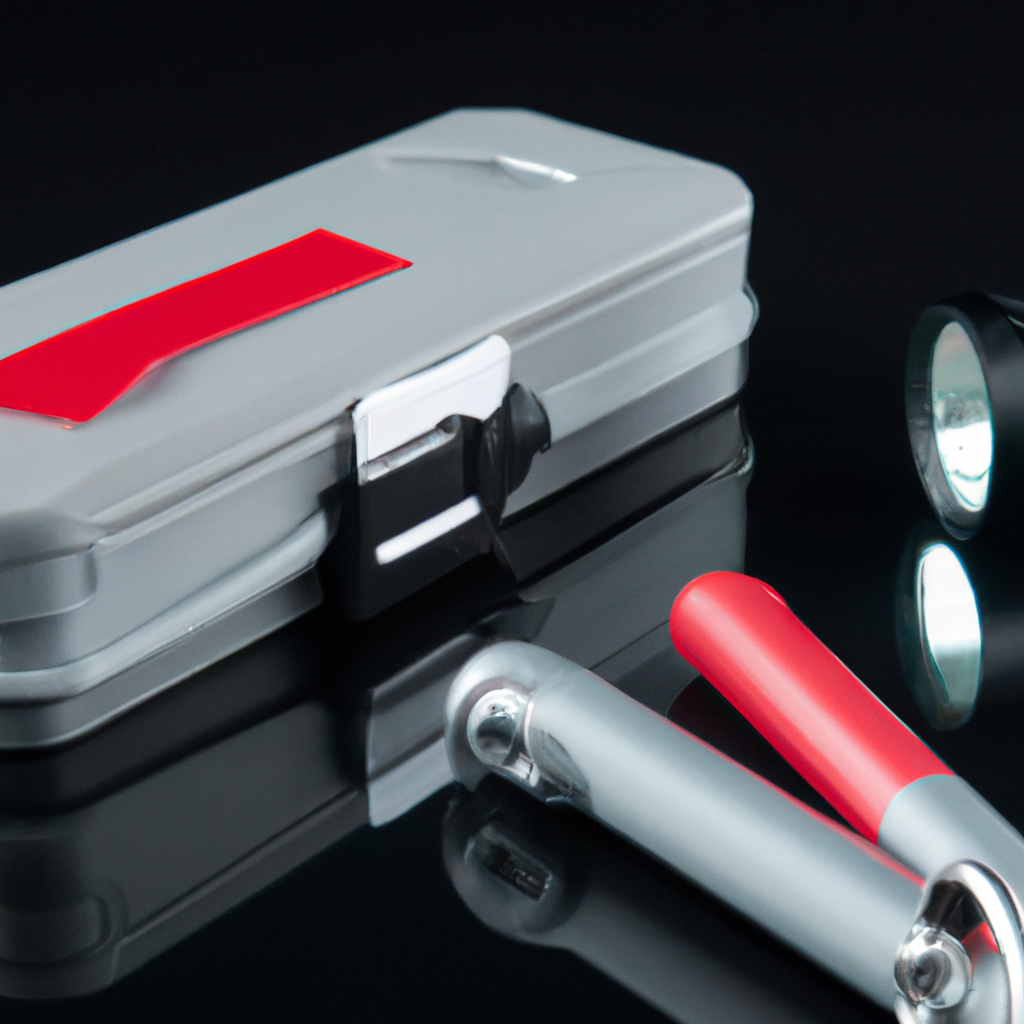Compact Emergency Essentials: Surviving With 3 Tiny Items
In today’s world, it seems like the only thing we can count on is unpredictability. Whether it’s natural disasters or pandemics, there’s always a sense of uncertainty about when we might face a situation that requires us to rely on ourselves. However, when it comes to getting ready for emergencies, one common mistake is thinking that having more is always better.
They stockpile large, cumbersome items that take up precious space and are difficult to transport. In reality, the key to surviving any emergency is to have compact, versatile essentials on hand that can fit into any space and be easily carried on the go.
This is where the concept of compact emergency essentials comes in. These are small, portable items that can make a big difference in an emergency situation. Whether you’re facing a power outage, a natural disaster, or a medical emergency, having these tiny survival items on hand can help you stay safe, comfortable, and prepared.
In this article, we’ll explore three of the most essential compact emergency items, as well as the benefits of smaller emergency items, how to store them, and why preparation is key to surviving any disaster. So let’s dive in and discover how you can be ready for anything with just three tiny items.
Key Takeaways
- Emergency items are important to have on hand for disasters and inclement weather.
- Tiny survival items can be portable and easy to store in small spaces.
- Keeping emergency items charged and filled with fuel is crucial for preparation.
- Mini generators and compact water storage are useful for power outages and storms.
Importance of Emergency Items
Emergency items are crucial for survival during disasters as they provide the necessary resources for drinking, cooking, and washing. The Red Cross recommends having emergency items on hand, as they can offer peace of mind during disasters and help individuals withstand the aftermath of a catastrophe.
Compact emergency items are especially beneficial as they can be stored in limited spaces such as under stairs, in a loft, under a bed, or in a car trunk. The benefits of smaller emergency items cannot be overstated. Smaller generators are easier to store and can be charged via 110 or solar power, making them a practical choice for individuals with limited storage space.
Compact emergency items can also fit into a smaller bag or backpack, making them portable and easy to carry. By incorporating these items into one’s emergency preparedness plan, individuals can ensure they have the necessary resources to survive in the event of a disaster.
Types of Items
One category of essential items for disaster preparedness includes small generators, collapsible water storage cubes, and portable survival tools. These compact emergency essentials offer numerous benefits over traditional emergency items.
Firstly, they are easier to store and can fit into smaller spaces, making them ideal for tiny houses or apartments with limited storage space. Secondly, portable emergency items can be carried in a backpack, making it easier to evacuate in the event of a disaster.
In addition to their practical benefits, compact emergency items can also evoke an emotional response in the audience. They offer peace of mind knowing that in the event of a disaster, one has the necessary tools to survive. Furthermore, the portability of these items allows for greater flexibility and independence, as one can easily move and adapt to changing circumstances.
Ultimately, having compact emergency essentials on hand is a crucial aspect of disaster preparedness.
Preparation and Storage
Preparing for potential disasters requires foresight and strategic planning, akin to a captain charting a course to navigate treacherous waters. When it comes to emergency items, maximizing limited space is key, especially in tiny houses or small apartments. Before purchasing any emergency items, consider the space available for storage and choose compact items that can fit into small spaces.
To ensure that emergency items are ready to use during a disaster, it’s important to keep them charged and filled with fuel. For example, mini generators can be charged via 110 or solar power and can run small heaters, charge devices, or plug in a fridge. Collapsible water storage cubes can be filled up before a storm hits, providing a reliable source of water during an emergency. By keeping emergency items charged and filled with fuel, homeowners can ensure that they are ready to use at a moment’s notice.
| Charging Tips | Fueling Tips | Storage Tips | |
|---|---|---|---|
| Mini Generators | Charge via 110 or solar power | Store fuel in a safe and dry place | Store in a small space such as under stairs or in a car trunk |
| Collapsible Water Storage Cubes | Fill up before a storm hits | Water does not require fuel | Store in a small space such as under a bed or in a loft |
| Tiny Survival Items | Charge via solar power or hand-crank | Hand-crank items do not require fuel | Store in a small backpack or bag for easy transport |
By following these charging and fueling tips for emergency items and maximizing limited storage space, homeowners can be better prepared for potential disasters and emergencies. It’s important to think ahead and plan for the worst, so that in the event of a disaster, homeowners have the peace of mind and the necessary items to survive.
Frequently Asked Questions
What are some examples of emergency items that are not portable or compact?
Disadvantages of bulky emergency items are numerous. Large water containers are difficult to store and maneuver, while heavy generators take up too much space and require a lot of fuel. In addition, bulky emergency items are not easily portable, making them less useful during an emergency situation that requires evacuation.
Importance of compactness in emergency gear cannot be overstated. Compact emergency items are easier to store under stairs, in a loft, under a bed, or in a car trunk, making them more accessible during an emergency. Moreover, portable and easy-to-carry emergency items, such as tiny survival items, can fit into a smaller bag or backpack, making them more convenient during evacuation.
How often should emergency items be checked and replaced?
The frequency of replacement and importance of maintenance for emergency items will depend on the specific item and its shelf life.
It is recommended to regularly check and replace items that have expiration dates, such as batteries, first aid supplies, and food and water items.
In addition, it is important to regularly check the functionality of equipment such as generators and flashlights to ensure they are in good working condition.
Proper maintenance and upkeep of emergency items can ensure that they are ready to use when needed and can help prevent any potential issues during an emergency situation.
Can tiny survival items be used for long-term survival situations?
In assessing the long term viability of tiny survival items, it is important to recognize their limitations. While these items are useful for short-term emergencies and can provide a sense of security, they may not be sufficient for extended survival situations.
Tiny survival items, such as mini generators and collapsible water storage cubes, have limited capacity and may run out of fuel or water quickly. Additionally, their compact size may limit their ability to provide for long term survival needs, such as food and shelter.
Alternative options, such as larger generators and storage containers, may offer more capacity but come with trade-offs, such as increased size and weight. Ultimately, the choice of emergency items should depend on individual needs and circumstances.
Are there any specific types of emergency items recommended for people with medical needs?
When it comes to medical emergencies, there are several essential supplies that are recommended to have on hand. These may include items such as first aid kits, prescription medications, and medical devices such as oxygen tanks or insulin pumps.
It is important to consider any specific medical needs when preparing for emergencies, and to ensure that these essential supplies are easily accessible and regularly maintained.
In addition to these medical necessities, it is also important to have access to basic emergency items such as water, food, and shelter in order to fully prepare for any potential disasters.
What should be done with emergency items that have expired or are no longer usable?
Proper disposal of expired or no longer usable emergency items is important to prevent harm to the environment and ensure safety. Many emergency items, such as batteries, have specific disposal instructions due to their hazardous nature.
It is recommended to research the proper disposal methods for each item or contact local waste management facilities for guidance.
Alternatively, some expired emergency items can be repurposed for alternative uses, such as using expired water purification tablets for cleaning or emergency lighting.
However, it is important to note that using expired items for their original purpose can be dangerous and should be avoided.
I’m Theodore, and I love tiny houses. In fact, I’m the author of Tiny House 43, a book about tiny houses that are also tree houses. I think they’re magical places where imaginations can run wild and adventures are just waiting to happen.
While tree houses are often associated with childhood, they can be the perfect adult retreat. They offer a cozy space to relax and unwind, surrounded by nature. And since they’re typically built on stilts or raised platforms, they offer stunning views that traditional homes simply can’t match.
If you’re looking for a unique and romantic getaway, a tree house tiny house might just be the perfect option.










